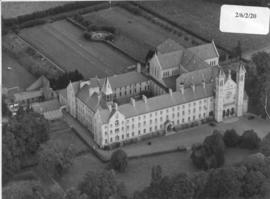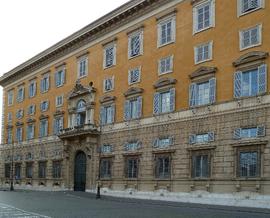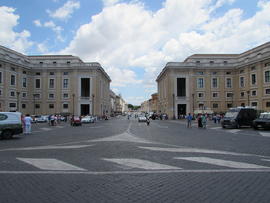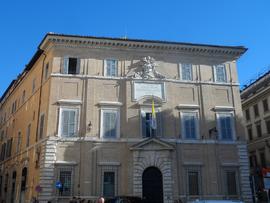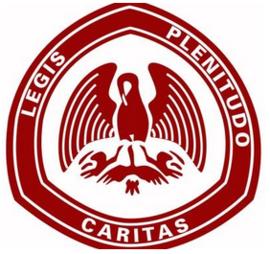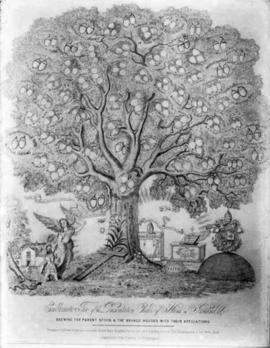https://www.newadvent.org/cathen/08026a.htm
The great apostasy of the sixteenth century, the filtration of heresy into Catholic lands, and the progress of heterodox teachings everywhere, prompted Paul III to establish the "Sacra Congregatio Romanae et universalis Inquisitionis seu sancti officii" by the Constitution "Licet ab initio" of 21 July, 1542. This inquisitional tribunal, composed of six cardinals, was to be at once the final court of appeal for trials concerning faith, and the court of first instance for cases reserved to the pope. The succeeding popes — especially Pius IV (by the Constitutions "Pastoralis Oficii" of 14 October, 1562, "Romanus Pontifex" of 7 April, 1563, "Cum nos per" of 1564, "Cum inter crimina" of 27 August, 1562) and Pius V (by a Decree of 1566, the Constitution "Inter multiplices" of 21 December, 1566, and "Cum felicis record." of 1566) — made further provision for the procedure and competency of this court. By his Constitution "Immensa aeterni" of 23 January, 1587, Sixtus V became the real organizer, or rather reorganizer of this congregation.
The Holy Office is first among the Roman congregations. Its personnel includes judges, officials, consultors, and qualificators. The real judges are cardinals nominated by the pope, whose original number of six was raised by Pius IV to eight and by Sixtus V to thirteen. Their actual number depends on the reigning pope (Benedict XIV, Constitution "Sollicita et Provida", 1733). This congregation differs from the others, inasmuch as it has no cardinal-prefect: the pope always presides in person when momentous decisions are to be announced (coram Sanctissimo). The solemn plenary session on Thursdays is always preceded by a session of the cardinals on Wednesdays, at the church of Santa Maria sopra Minerva, and a meeting of the consultors on Mondays at the palace of the Holy Office. The highest official is the commissarius sancti oficii, a Dominican of the Lombard province, to whom two coadjutors are given from the same order. He acts as the proper judge throughout the whole case until the plenary session exclusive, thus conducting it up to the verdict. The assessor sancti officii, always one of the secular clergy, presides at the plenary sessions. The promotor fiscalis is at once prosecutor and fiscal representative, while the advocatus reorum undertakes the defence of the accused. The duty of the consultors is to afford the cardinals expert advice. They may come from the secular clergy or the religious orders, but the General of the Dominicans, the magister sacri palatii, and a third member of the same order are always ex-officio consultors (consultores nati). The qualificators are appointed for life, but give their opinions only when called upon. The Holy Office has jurisdiction over all Christians and, according to Pius IV, even over cardinals. In practice, however, the latter are held exempt. For its authority, see the aforesaid Constitution of Sixtus V "Immensa aeterni" (see ROMAN CONGREGATIONS).
The Sisters of St. Joseph Chambery arrived in Wales from India in 1939. In 1958 they founded a house in Dublin at the invitation of Archbishop John Charles McQuaid.
This is the current site of St. Josephs hospital, Raheny. They sold this hospital in 1997, but still maintain a convent on the same site.
In 1977 they also bought a house for the purposes of supporting a novitiate, but sold this in 2005.
The Congregation of Our Lady of Apostles (OLA) was founded in Lyon in 1876 by Father Augustine Planque and immediately began to recruit girls in Ireland. The Irish Sisters would eventually settle in Ardfoyle Convent in Ballintemple, Cork from 1913 onward and became their own OLA Province on the 25th of November 1930. The Irish Province was initially comprised the OLA houses in Ireland, the Vicariate of Benin, and the Vicariate of Niger, with the latter of these two now being present day Nigeria. Sometime between 1930 and 1938 the OLA communities in the Gold Coast, now modern day Ghana, were included in the Irish Province. In 1950 the Irish Province began assuming responsibility of the French Generalate’s convents and foundations in England starting with their house in London, followed soon after by their property in Lancaster in 1953. For three years from 1949-1952 the Irish OLA had a foundation in Niger where they were involved in primary school education, and in 1957 the Irish Sisters began a new foundation in the United States.
In addition to setting up their own foundations, the Irish Province also assisted in the work of other OLA communities abroad in Egypt, Algeria, France and Argentina. And in 1974 the Irish Province sent their own sisters to help staff hospitals in Kenya and Zambia. In the 1990’s the original foundations in Nigeria and Ghana became self-sufficient and independent OLA provinces of their own, and so, the Irish Province opened a new frontier in Tanzania in 1991, and also sent Sisters to South Sudan to aid refugees where they remained until 1997. In 2024 the Irish Province became an OLA District alongside Tanzania with both Districts being independent.
The Sacred Congregation of Rites was a congregation of the Roman Curia, erected on 22 January 1588 by Pope Sixtus V by Immensa Aeterni Dei; it had its functions reassigned by Pope Paul VI on 8 May 1969.
The Congregation was charged with the supervision of the liturgy, the dispensation of the decrees of Canonical coronations, other various sacraments, and the process of canonization of saints.
https://www.newadvent.org/cathen/13136a.htm
Sixtus V first erected by a Brief of 17 May, 1586, and afterwards, by the Constitution "Immensa", confirmed, a congregation "super consultationibus regularium" distinct from the congregation "super consultationibus episcoporum et aliorum prælatorum" mentioned in the same Constitution. In 1601 these two congregations were already combined in the Congregation of Bishops and Regulars, to which, in course of time, were united three other congregations whose functions were closely related. These three were: the Congregation on the State of Religious (super statu regularium), created by Innocent X on 15 August, 1652, for the reformation of regulars in Italy, and suppressed by Innocent XII on 4 August, 1698; the Congregation on Regular Discipline (super disciplina regulari), instituted by Innocent XII on 18 July, 1695, for the reformation of regulars not only in Italy but throughout the whole world; the Congregation on the State of the Regular Orders (super statu regularium ordinum), created by Pius IX on 17 June, 1847. The last-named and the one on regular discipline were suppressed by Pius X, by the Motu Proprio of 26 May, 1906, which united these congregations with that of Bishops and Regulars. The new Constitution of Pius X abolishes the Congregation of Regulars and Bishops and transfers that part of its business which concerns bishops to the Congregation of the Council, and that part of it which concerns regulars to a congregation (oongregatio negotiis religiosorum sodalium præposita) created by the new Constitution, and which by common usage sanctioned by the legend on the official seal of the congregation, has received the name of Congregatio of Religious.
This body has the usual organization of the Roman Congregations. It is formed of several cardinals, who are chosen by the pope, and one of whom is the prefect of the congregation; these cardinals are assisted by a secretary and a sub-secretary, who are the major officials of the congregation, and by several minor officials. In regard to the latter it is to be noted that, as the amount of its business necessitates a division of the congregation into three parts (as in the case of the Congregation of the Sacraments), the highest dignitaries among the minor officials are the three assistants who are placed over the three sections. One of these sections has to deal with matters relating to religious orders; another, with the business of religious congregations or associations of men, of whatever nature those associations may be; the third, with business relating to congregations of women. This congregation also has a college of consultors.
The Constitution of Pius X clearly defines the competency of this congregation, which is to pass judgment upon all matters relating to religious persons of either sex, whether bound by solemn or by simple vows, or to those persons who, although they be not religious in the canonical sense of the word, live as religious — such as the oblates of certain communities of men or of women, who, without being bound by vows, live a common life under an approved rule. The third orders, consisting of seculars, are also under this congregation. It decides in litigations between members of religious orders, or between religious and bishops, and it is the competent tribunal in eases which have to be dealt with in the way of discipline (in via disciplinari) where a religious appears either as plaintiff or as defendant. Hence it is to be inferred, and indeed is expressly stated in the Constitution, that causes which have to be dealt with in the judicial way must be referred to the Rota, the rights of the Holy Office being always safeguarded. Finally, all common law dispensations to regulars pertain to this congregation, excepting dispensation from the Eucharistic fast, which, as said above, pertains to the Congregation of the Sacraments. The Congregatio of Religious is alone competent to approve new religions institutes and their constitutions, as well as to modify institutes already approved, and these being matters of grave importance, the full congregation deals with them.
The Sacred Congregation de Propaganda Fide, whose official title is "sacra congregatio christiano nomini propagando" is the department of the pontifical administration charged with the spread of Catholicism and with the regulation of ecclesiastical affairs in non-Catholic countries. The intrinsic importance of its duties and the extraordinary extent of its authority and of the territory under its jurisdiction have caused the cardinal prefect of Propaganda to be known as the "red pope".
Administrative and Biographical History
The Institute of Charity is a Roman Catholic religious congregation, founded in the early nineteenth century by Antonio Rosmini. The members of the order are referred to as “Rosminians” after their founder. The Congregation was approved by the Pope Gregory XVI in September 1839. As of the year 2020 the order Congregation is divided into six provinces. These provinces are the Irish-American Province, the Province of the England, Wales and New Zealand, the Italian Province, the Indian Province, the East-African Province and the Venezuelan Province. The world headquarters of the Institute of Charity is located at Rosmini College, Porta Latina, in Rome, Italy. The leader of the Institute of Charity is referred to as the Father General or sometimes as the Provost General. There have been eleven Fathers General with Antonio Rosmini being the first. They are (with years they were Father General):
Antonio Rosmini (died 1855)
Giambattista Pagani (1855-1860)
Piettro Bertetti (1860-1874)
Giuseppi Cappa (1874-1877)
Luigi Lanzoni (1877-1901)
Bernardino Balsari (1901-1935)
Giuseppi Bozzetti (1935-1956)
Giovanni Gaddo (1956-1989)
Giambattista Zantedeschi (1989-1997)
James Flynn (1997-2013)
Vito Nardin (2013-Present)
The Father General traditionally remained in his position until his death however in more recent times, the Father General may resign at 75. If the Father General wishes to not continue a vote by the curia is held to decide if this wish can be granted.
The Irish Province was founded in 1931. The first Rosminians in Ireland were led by a missionary named Aloysius Gentili who arrived to preach in 1848. Gentili died shortly after arriving in Dublin and was buried in Glasnevin Cemetry. His remains were later moved to Omeath in county Louth close to St. Michaels School which was ran by the Institute of Charity. The Irish Province has changed boundaries numerous times and at one time or another incorporated England, the United States of America, and New Zealand. Since 2019 the province consists of the island of Ireland and three houses in Florida. The province is controlled by a provincial and a provincial council who meet to discuss matters within the province. Past provincials include:
1. Thomas Hickey (1931-1948)
2. John Hickey (1948-1955)
3. Hugh MacFadden (1955-1964)
4. Benedict Forsyth (1964-1973)
5. Bernard McNally (1973-1976)
6. Charles O Sullivan (1976-1985)
7. James Flynn (1985-1991)
8. Patrick Pierce (1991-1997)
9. Matthew Gaffney (1997-2003)
10. Joseph O Reilly (2003-2010)
11. David Myers (2010-2014)
12. Joseph O Reilly (2014-Present)The term held in the role of provincial is currently for a period of six years before new elections take place to decide the successor.
The Institute of Charity has owned numerous buildings across Ireland throughout its history. Each building fulfilled a different function with some changing function numerous times throughout their history. The buildings whose records are included in this collection are:
• St. Michael’s, Omeath, County Louth.
• St. Joseph's School for the Blind and other Drumcondra buildings.
• St. Joseph’s, Ferryhouse, County Tipperary.
• St. Patrick’s, Upton, County Cork.
• Glencomeragh, County Tipperary.
• Kilmurry House, Kilworth, County Cork.
Omeath
St. Michaels in Omeath, Co.Louth, came into the possession of the Institute of Charity in 1901 following the death of its previous owner, Edward MacCreanor, who wished to bequeath the building to a religious congregation. The building acted as a novitiate for the Rosminians in its early days before later becoming a juniorate in 1927. The diary from St. Michaels contains some interesting events from its early days as a novitiate including a visit in August 1921 by Margaret Pearse, mother of the Easter Rising rebel Pádraig Pearse, visits by Black and Tans during the Irish War of Independence, reaction to the Anglo-Irish Treaty ratification in January 1922, and a raid by Free State soldiers in September 1922. Several improvements were made to St. Michael’s in the early days of Rosminian ownership including the installation of a new altar, the construction of the Calvary in 1908, the gifts of statues and the opening of St Michael’s as a Juniorate in 1927. In 1954 St. Michaels was recognized as a secondary school for boys, while girls were also allowed enter the school. It was primarily a boarding school however day students also were taught at the school. The school would close in 1986. The Rosminians also owned other property nearby to St. Michaels including a house in Fane Valley and numerous fields on the Cooley Peninsula. The Rosminians were also put in charge of Faughart Parish in County Louth in 1986 which they continue to run as of the year 2020.
Kilmurry House
The Rosminians bought Kilmurry House in Kilworth, Co. Cork, in 1931 after getting approval from Robert Browne, Bishop of Cloyne, to purchase the property in order to set up a novitiate. Correspondence and memorandums included in this collection relating to these negotiations with the Bishop of Cloyne highlight the processes religious congregations had to go through when wanting to purchase land in a diocese. After setting up the novitiate the Institute of Charity spent money on renovating the building as well as purchasing land nearby. The building sustained substantial damage following a fire in April 1953. The Institute of Charity sold the building in 1972. The Kilmurry House collection consists of a substantial number of letters and application forms from boys who wished to join the novitiate. These records have been arranged in alphabetical order of the boy’s names. The application forms contain information on each boy's family including the names of their parents, their addresses, the primary schools they attended, their dates of baptism, and their date of confirmation. Letters of recommendation from parish priests and family doctors are also included with the applications. The boys in their correspondence with the rector in Kilmurry explain their reasons for wanting to join the Institute of Charity and some also describe their family life and the occupations of other family members. Another important item of note is a catalogue of names of members of the Institute of Charity and students who attended the novitiate at Kilmurry House, County Cork between the years 1933 and 1937. This catalogue includes the age, rank, and the date of entry into the novitiate of those who resided there.
Glencomeragh
Glencomeragh was purchased by the Institute of Charity in 1960 and became a novitiate. A report contained in the Glencomeragh Collection describes the importance of Glencomeragh House during the founding of the Hospitaller Order of St. John of God in Ireland. While under the ownership of the Rosminians the building had heating installed while a new chapel was constructed between 1981 and 1983. The Rosminians also owned other properties near Glencomeragh House which they rented out. In later years Glencomeragh House was used by the
Institute of Charity as a retreat centre and as a House of Prayer. In later years a major upgrade in the House of Prayer was the construction of hermitages on the property’s grounds to be used by those on retreat. The Institute of Charity handed over Glencomeragh House to the Diocese of Waterford and Lismore in 2016 and it is now being ran by the Holy Family Mission as a retreat centre for young adults.
Ferryhouse
St. Joseph's Industrial School in Ferryhouse, County Tipperary was constructed by Count Arthur Moore. Completed in 1884, Moore handed over ownership of the school to the Institute of Charity shortly after the completion of the building. The Rosminians also purchased land at nearby Tickincor. The Ferryhouse collection contains important documents related to the details of boys who were placed into the care of the Institute of Charity throughout the history of the Industrial School including lists of boys who were accepted and discharged from the school and medical reports. The collection also contains examples of activities the boys carried out in the school, day trips undertaken and material from school plays.
A series of newspaper reports also explain important events which took place in St. Joseph's Industrial School including a visit by Patrick Hillery, President of Ireland, in August 1984; the opening of a £1,000,000 new complex at Ferryhouse in January 1983; reports regarding craft work and classes in arts and crafts in Ferryhouse; an early newspaper report concerning the qualifications for the teachers involved in the school, the public perceptions of institutions like the school at Ferryhouse and the training offered to the students. Items such as menus provide information on the types of food eaten by the boys in St. Josephs while newspaper articles, while reports contain information on the conditions inside the school and the types of punishments the boys faced if they disobeyed the rules.
Other associations became important to the functioning of the industrial school in Ferryhouse. This included the Resident Managers Association and the Association of Workers in Childcare. The Resident Managers Association was formed primarily by heads of religious institutions which had the responsibility for caring for neglected and poor children while the
Association of Workers in Childcare catered for residential child care workers in Ireland and was primarily concerned with the maintenance of standards of child care and of training for the profession in the country. Records relating to both associations are contained in the Ferryhouse Collection.
As well as the running of the Industrial School the Institute of Charity purchased and rented out property and land close to Ferryhouse. This included property in Laganore, Tickincor, Glenconnor, Poulboy and Clonmel. Henry Shannon and Co. solicitors from Clonmel, Co. Tipperary, assisted the Institute of Charity regarding issues that arose concerning the renting and sale of these properties. The Ferryhouse collection also includes the legal documents and folios containing the agreements and the property details of the properties owned by the Institute of Charity close to Ferryhouse.
St. Joseph's Industrial School was transferred to the Department of Education in 2002. Documentation regarding the transfer is included in the Ferryhouse collection.
St. Joseph's School for the Blind
St. Joseph's School for the Blind, now known as Childvision, is located on Gracepark Road in the Dublin suburb of Drumcondra. The school was founded by the Discalced Carmelite Order who began their work with the blind in Glasnevin in 1859 before moving to the current site in 1882. By 1953, a reduction in their personnel meant that the Carmelites were no longer able to maintain this service and the Archbishop of Dublin, who was the patron of the Carmelites, approached the Superiors of the Institute of Charity to take over the running of the school. After taking over the school the Institute of Charity expanded the facility with the construction of new buildings in the 1960s. By the 1970s a secondary school, Pobailscoil Rosmini, had been established on Gracepark Road alongside the School for the Blind. Boys who attended the School for the Blind could complete their secondary education. By the mid-2000s further expansion of the school was proposed. The Drumcondra collection contains extensive material on proposed plans, minutes of meetings and correspondence between government, contractors and the Board of the School for the Blind concerning the creation of National Centre for the Blind on the site of School for the Blind. This never materialised.
A number of other properties were owned by the Institute of Charity in Drumcondra including 2 Grace Park Gardens and 1 Grace Park Gardens. These properties were rented out to various organisations, details of which are included in the collection. Clonturk House on the Ormond Road in Drumcondra is the current provincial house of the Institute of charity in Ireland. Before becoming the provincial house, it was as a centre for blind adult men. The Drumcondra collection contains mostly administrative documentation on Clonturk House including financial documentation, a speech from the silver jubilee of Clonturk House about the history of the building, medical reports on the men who were cared for there, and mass books.
Africa
The Institute of Charity have been carrying out missionary work in the African country of Tanzania since they first arrived there in 1945. The African collection contains correspondence between the early Rosminian missionaries in Tanzania and Thomas Hickey, Provincial of the Irish Province of the Institute of Charity, describing their journeys to Tanzania, mostly by boat, the conditions they met when they arrived in Tanzania and the work, they had carried out following their arrival. A diary written by Frank Kennedy describes in detail his journey by boat and train from Dublin to Tanzania between November 1945 and December 1945. Another diary written by an unknown author documented the early days of the mission in Rangwe, Tanzania, in the arrival of Walter Dick and John Reid and the famine conditions faced in Tanzania throughout 1953. The collection also contains photographs, estimated to have been taken in the 1960s, which show examples of the missionary work being carried out in Tanzania as well as the customs and traditions of the Tanzanian people including a traditional Tanzanian wedding.
Aid was important for the continuation of the missionary work carried out by the Institute of Charity in Tanzania. There was frequent correspondence between the Rosminians and aid organisations such as Gorta and the Department of Foreign Affairs of the Irish government in order to secure aid for the missionary work. Aid contributed towards improvement in educational facilities, agriculture, the construction of mills, the construction of an arts and crafts centre, and electricity and water infrastructure. Meetings of the African Chapter were also frequently held and discussions were had on formation in Africa, preparations for religious festivals, relations with the Irish Province, and the beatification of Antonio Rosmini.
Carmelites
The Discalced Carmelites played a part in the history of the Institute of Charity. The history of the discalced Carmelites in Drumcondra and also in areas such as Glasnevin and Clondalkin have been preserved in this collection thanks to Patrick Keaveney and Vincent Corcoran, both discalced Carmelites who kept documents, items and photographs related to the Carmelites going back to 1825. The discalced Carmelites were present in monasteries in Glasnevin and Clondalkin. The oldest documents included in this collection include the transfer of obedience of the Carmelite Brothers of Clondalkin to the Archbishop of Dublin in August 1837, lists of members of the Discalced Carmelites who died in the monasteries in Drumcondra and Clondalkin between 1828 and 1963 and correspondence regarding the construction of an avenue to Glasnevin Cemetery in the 1830s on land belonging to the Carmelites. The discalced Carmelites founded St. Joseph's School for the Blind in Glasnevin before moving to Drumcondra on the site of Drumcondra Castle. The collection includes receipts containing information on construction work that was carried out in the school in Drumcondra including the construction of a staircase and of new buildings. Other documents include more personal documents belonging to Carmelite Brothers including death certificates, birth certificates, wills, and personal correspondence. The discalced Carmelites also owned properties in Dublin that they rented including properties on Prussia Street. In 1955, St. Joseph's School for the Blind was transferred to the Institute of Charity following negotiations between the Archbishop of Dublin, the Institute of Charity and the discalced Carmelites. It was agreed that the remaining Carmelites would continue to be resident in St. Joseph's following the takeover by the Institute of Charity. This collection is an important collection regarding the early history of the School of the Blind in Drumcondra and the education of blind men and boys in Ireland during the nineteenth century.
